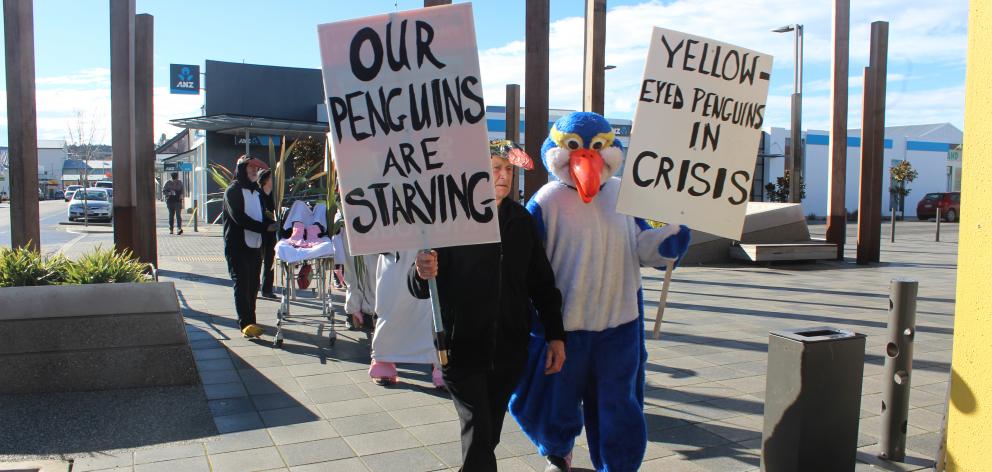
Numbers of the native bird have dropped significantly in recent years and Forest and Bird South Otago branch chairman Roy Johnstone said the protest march by some of its members dressed as penguins was designed to make the community aware of the problem.
"Yellow-eyed penguins along the Otago coast are in crisis," he said.
Numbers of the birds in Otago last year hit a 25-year low.
There were 261 breeding pairs in Otago last year, the lowest number since 140 pairs were counted in 1990-91.
The population rose to an estimated 635 breeding pairs in 1996-97, but numbers have since dropped again.
Predictions indicated the birds were likely to become extinct on the mainland unless something was done to address the situation.
The protesters marched from St Andrew’s Presbyterian Church to the Balclutha i-SITE and back. Mr Johnstone said there had been two major starvation events in the Catlins which had drastically affected the population there.
"Both adults and chicks were dying because there wasn’t enough food offshore."
While there were several breeding colonies along the coast, the main breeding ground for yellow-eyed penguins was at Long Point, east of Papatowai. Half of all chicks hatched recently were underweight.
Mr Johnstone believed the best way to protect the species was to introduce a marine reserve off the Catlins coast.
This would prevent over-fishing of the bird’s main food source.
He hoped more people would become aware of the "plight of the yellow-eyed penguin" and support a marine reserve.
Comments
It should probably be clarified that while starvation events indeed occured in the past, these were primarily driven by climate variables rather than overfishing.
Furthermore, greater issues than starvation are fisheries bycatch, degradation of the marine habitat and pollution. These factors are considered the main threats for the species on the mainland (https://peerj.com/articles/3272/?td=wk) and need to be managed to prevent the disappearance of the species from our coasts in the next 20-40 years.












